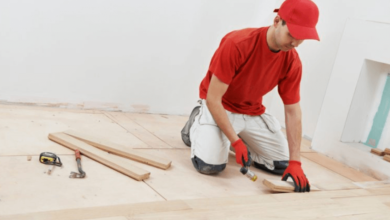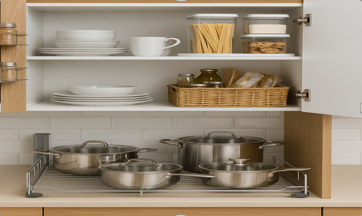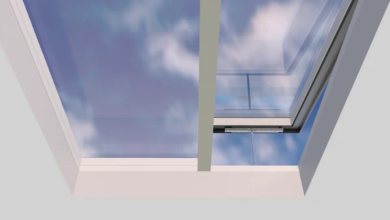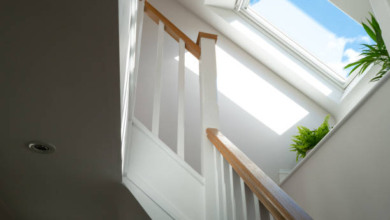Complete Guide to Granny Flat Builders and Perth Granny Flats
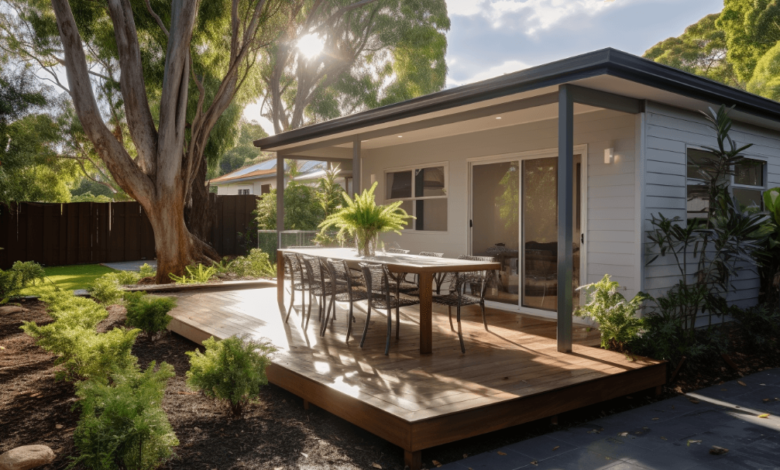
Granny flats have evolved from basic secondary dwellings into sophisticated, purpose-built structures that address diverse housing needs across Australia. These compact homes provide solutions for multigenerational living, generate rental income, accommodate ageing parents, or house adult children. Understanding the granny flat construction process, selecting appropriate granny flat builders, and navigating regulations—particularly in markets like Perth—enables property owners to maximise their land’s potential whilst creating valuable living spaces.
The Growing Popularity of Granny Flat Homes
Housing affordability challenges have driven increased interest in granny flat homes across Australian cities. These secondary dwellings allow families to create additional housing on existing blocks without purchasing separate properties. This approach proves particularly valuable in established suburbs where vacant land remains scarce and property prices continue rising beyond many people’s reach.
Demographic shifts contribute to granny flat demand. Australia’s ageing population creates needs for accessible housing that allows elderly family members to maintain independence whilst remaining close to support networks. Simultaneously, young adults often struggle to enter property markets, making granny flat homes attractive options for adult children unable to afford separate residences.
Rental income potential makes granny flats appealing investment opportunities. These structures generate ongoing returns whilst appreciating alongside the main dwelling. Strong rental demand for compact, well-located accommodation means granny flat homes often achieve excellent rental yields, particularly in desirable suburbs with good amenity and transport connections.
Property value enhancement represents another incentive. Well-designed granny flats increase overall property values, with the improvement typically exceeding construction costs in desirable locations. This added value benefits owners whether they retain the property long-term or eventually sell, making granny flat builder selection an investment decision beyond mere construction.
See also: Complete Guide to Granny Flat Builders and Perth Granny Flats
Understanding Granny Flat Regulations in Western Australia
Perth granny flats operate within specific regulatory frameworks established by the Western Australian government and local councils. Understanding these regulations proves essential before engaging granny flat builders or commencing design work. The Residential Design Codes provide overarching requirements, but local planning schemes may impose additional controls.
Size limitations typically restrict granny flat homes to 70 square metres of habitable floor space in most Western Australian jurisdictions, though this can vary by local government area. This constraint requires efficient design to incorporate all necessary living spaces—bedroom, bathroom, kitchen, and living areas—within relatively compact footprints. Experienced granny flat builders specialise in maximising functionality within these parameters.
Setback requirements dictate how close structures can be positioned to boundaries. Perth granny flats typically require minimum setbacks from side and rear boundaries, though these vary based on factors like boundary walls, outdoor living area locations, and relationship to neighbouring dwellings. Understanding applicable setbacks for specific properties prevents designing structures that cannot gain approval.
Development approval pathways differ based on compliance with deemed-to-comply provisions. Granny flats meeting all standard requirements may proceed through streamlined approval processes, whilst those requiring variations face more complex assessment. Knowledgeable granny flat builders navigate these pathways efficiently, advising whether proposed designs qualify for simplified approval or require more detailed applications.
Strata title implications warrant consideration. In Western Australia, granny flats cannot typically be subdivided and sold separately—they remain ancillary to the main dwelling. This differs from some eastern states where ancillary dwelling subdivision is permitted under certain circumstances. Understanding these limitations informs decision-making about long-term property strategies.
Design Considerations for Granny Flat Homes
Functional layout design proves critical in compact granny flat homes where every square metre matters. Open-plan living areas combining kitchen, dining, and lounge spaces create perceived spaciousness whilst maximising flexibility. Thoughtful placement of walls, doorways, and circulation spaces prevents wasted areas whilst maintaining comfort and privacy.
Natural light and ventilation significantly impact liveability in smaller dwellings. Quality granny flat builders prioritise appropriate window placement, incorporating glazing that brings daylight deep into floor plans whilst facilitating cross-ventilation. Skylights in bathrooms, hallways, or living areas further enhance natural light without compromising privacy or wall space needed for furniture placement.
Storage solutions require creativity in granny flat homes with limited space. Built-in wardrobes, under-stair storage where applicable, kitchen cabinetry extending to ceilings, and clever use of vertical space ensure occupants can store belongings without clutter. Experienced granny flat builders incorporate these features as standard, understanding their importance in compact living.
Accessibility features increasingly feature in granny flat design, particularly when accommodating elderly occupants. This includes step-free entries, wider doorways and hallways, accessible bathrooms with appropriate fixtures, and circulation space for mobility aids. Forward-thinking design incorporates these features without institutional appearance, creating homes that age gracefully with occupants.
Selecting the Right Granny Flat Builder
Specialisation in granny flat construction matters significantly. Whilst many builders construct various dwelling types, specialists focusing on granny flats develop refined processes, efficient designs, and deep understanding of relevant regulations. These granny flat builders deliver superior outcomes through focused expertise rather than treating granny flats as occasional side projects.
Portfolio review reveals builders’ experience and design capabilities. Viewing completed granny flats—either through photos or site visits—demonstrates construction quality, design sophistication, and whether the builder’s aesthetic aligns with personal preferences. Diverse portfolios showing various styles and configurations indicate versatility and experience.
Local knowledge proves particularly valuable for Perth granny flats where builders familiar with Western Australian regulations, local council requirements, and regional building conditions streamline processes. These builders maintain relationships with relevant authorities, understand common approval issues, and design within regulatory parameters from the outset.
Transparent pricing and comprehensive quotes distinguish professional granny flat builders from less reputable operators. Detailed breakdowns specifying all inclusions, from site preparation through to final finishes, prevent misunderstandings. Fixed-price contracts provide certainty, though understanding what variations might cost helps budget for any desired changes during construction.
The Granny Flat Construction Process
Initial consultation and site assessment begin the process. Professional granny flat builders evaluate the block’s characteristics, including dimensions, orientation, existing services, access for construction equipment, and relationship to the main dwelling and neighbours. This assessment identifies opportunities and constraints that inform design decisions.
Design development follows, with builders or architects creating plans that maximise the site’s potential whilst meeting regulatory requirements. This phase involves collaboration between builder, designer, and client to refine layouts, select materials, and specify finishes. Multiple iterations typically occur before finalising designs ready for council submission.
Development approval submission requires comprehensive documentation including detailed plans, site plans showing setbacks and easements, specifications, and various technical reports depending on local requirements. Experienced granny flat builders prepare these submissions efficiently, responding promptly to any council queries to minimise approval timeframes.
Construction commencement follows approval, beginning with site preparation and foundation works. Granny flat builders coordinate trades systematically—concreters, framers, plumbers, electricians, and various finishing trades. Quality builders maintain schedules whilst ensuring each trade completes work to standard before subsequent trades commence.
Cost Factors for Perth Granny Flats
Base construction costs for Perth granny flats typically range from $150,000 to $300,000 depending on size, design complexity, and finish quality. Budget options with standard inclusions sit at the lower end, whilst high-specification granny flats with premium finishes command higher prices. Understanding what different price points deliver helps set realistic expectations and budget appropriately.
Site-specific factors significantly impact costs. Level, easily accessible sites with existing services nearby cost less to develop than sloping blocks requiring retaining, properties with difficult access restricting equipment, or locations distant from service connections. Experienced granny flat builders account for these variables when quoting.
Design choices influence budgets considerably. Simple rectangular footprints with efficient layouts cost less than complex shapes requiring more materials and labour. Similarly, standard finishes and fixtures prove more economical than custom joinery, high-end appliances, or premium materials. Understanding these cost drivers allows informed decisions balancing aesthetics with budget.
Council and authority fees vary by jurisdiction but typically total several thousand dollars. These include development application fees, building permit costs, and various certification requirements. Reputable granny flat builders specify these costs clearly, ensuring clients understand the full investment required beyond pure construction costs.
Maximising Returns from Granny Flat Build Projects
Rental market research informs decisions about design and inclusions for investment-focused granny flat build projects. Understanding what tenants in the area seek—whether young professionals, couples, or retirees—guides specifications. Features valued by target demographics justify their costs through higher rents or reduced vacancy periods.
Location within the property affects rental appeal. Where possible, positioning granny flat homes to provide privacy from the main dwelling whilst accessing good natural light and outdoor space enhances desirability. Street access, where permitted, sometimes commands rental premiums by offering occupants more independence.
Finish quality balances initial investment with ongoing maintenance. Durable, low-maintenance materials withstand tenant turnover whilst maintaining appearance. Quality granny flat builders recommend finishes that achieve this balance—avoiding both the cheapest options requiring frequent replacement and unnecessarily premium specifications that don’t enhance rental returns.
Property management considerations include separate utilities where practical, enabling accurate billing and reducing disputes. Individual water, electricity, and gas meters simplify rental arrangements. Similarly, dedicated outdoor spaces, even if compact, prove highly valued by tenants and justify rental premiums.
WA Granny Flats: Regional Variations and Opportunities
Regional Western Australian markets offer opportunities for wa granny flats beyond metropolitan Perth. Coastal and regional centres experiencing growth often welcome additional housing that doesn’t consume additional land. Understanding regional council attitudes and specific local requirements guides decision-making about granny flat viability.
Rural residential properties sometimes permit larger granny flats or more flexible design approaches than urban areas. These settings often allow more generous setbacks, larger structures, and distinctive designs that might not gain approval in densely populated suburbs. Confirming specific requirements with local authorities early prevents disappointments.
Mining region housing demands create opportunities for wa granny flats in resource-rich areas. Strong rental markets in these locations mean well-designed granny flats achieve excellent returns. However, understanding local planning schemes, which sometimes include specific provisions for worker accommodation, proves essential.
Tourism applications represent another avenue in appropriate locations. Short-term rental markets in popular destinations sometimes welcome small, self-contained accommodation. However, this requires confirming local regulations permit such use—many areas restrict granny flats to long-term residential occupation only.
Sustainability in Modern Granny Flat Construction
Energy efficiency in compact granny flat homes proves particularly cost-effective. Smaller spaces require less energy to heat and cool, meaning efficiency investments deliver faster payback. Quality granny flat builders incorporate good insulation, efficient glazing, appropriate orientation, and energy-efficient appliances as standard.
Solar power systems suit granny flats excellently. Modest energy requirements mean relatively small, affordable systems can meet most or all electricity needs. This proves attractive for owner-occupiers reducing bills and investors marketing eco-friendly rentals. Roof designs should accommodate solar panels where clients intend installation.
Water conservation features reduce both environmental impact and utility costs. Water-efficient fixtures, dual-flush toilets, and drought-tolerant landscaping around granny flat homes minimise water consumption. Some designs incorporate rainwater tanks, particularly where garden watering or toilet flushing can utilise collected water.
Material selection impacts sustainability credentials. Granny flat builders committed to environmental responsibility specify sustainably sourced timber, recycled content materials, low-VOC paints and finishes, and products with minimal environmental footprints. These choices create healthier indoor environments whilst supporting responsible resource use.
Common Challenges and Solutions
Boundary proximity issues arise when optimising site layouts. Perth granny flats on compact blocks sometimes push setback limits, requiring careful design to meet requirements. Experienced granny flat builders solve these challenges through creative orientation, multi-storey designs where permitted, or features like boundary walls that allow reduced setbacks.
Privacy concerns from neighbours occasionally emerge during application processes. Proactive design addressing potential objections—through strategic window placement, screening, orientation away from neighbouring outdoor areas—prevents disputes. Quality granny flat builders anticipate these issues, incorporating solutions before objections arise.
Services connections sometimes present challenges, particularly for properties distant from connection points. Electricity, water, and sewer extensions add costs and complexity. Early identification allows accurate cost estimation and, where necessary, exploring alternatives like septic systems or water tanks if permitted.
Access for construction equipment on restricted sites requires planning. Granny flat builders experienced with urban construction develop strategies for tight sites—using smaller equipment, hand-carrying materials, or coordinating with neighbours for temporary access. These solutions enable construction on sites initially appearing unbuildable.
Future-Proofing Granny Flat Investment
Adaptable design allows granny flat homes to serve changing needs over time. Features supporting this flexibility include neutral aesthetics appealing to varied occupants, layouts accommodating different furniture arrangements, and infrastructure for future modifications. This adaptability protects investment value as circumstances change.
Building standards evolve, with energy efficiency and accessibility requirements progressively tightening. Granny flat builders incorporating standards exceeding current minimums create structures less likely to feel dated or require upgrades. This forward-thinking approach maintains competitiveness in rental markets and resale appeal.
Technology infrastructure warrants attention in contemporary granny flat build projects. Adequate data cabling, power outlets for modern device usage, and smart home capability where desired ensure structures meet current expectations. These features prove particularly important for rental properties targeting younger demographics.
Maintenance planning from the outset preserves value. Selecting durable materials, planning for ongoing upkeep, and maintaining records of construction specifications and warranties facilitates proper care. Regular maintenance prevents minor issues becoming major problems, protecting investment returns and occupant satisfaction.
Conclusion
Granny flats represent versatile solutions addressing diverse housing needs whilst maximising property potential. Success requires navigating regulatory frameworks, selecting experienced granny flat builders, making informed design decisions, and understanding cost factors. Perth granny flats specifically operate within Western Australian contexts that shape opportunities and constraints.
Whether providing family accommodation, generating rental income, or enhancing property values, well-planned granny flat homes deliver substantial benefits. The key lies in thorough planning, engaging specialists who understand the unique aspects of granny flat construction, and making decisions that balance immediate needs with long-term value. As housing challenges persist and demographic patterns evolve, granny flats will likely play increasingly important roles in Australian housing landscapes, offering flexible, efficient solutions that serve communities whilst rewarding property owners who embrace these opportunities thoughtfully.

